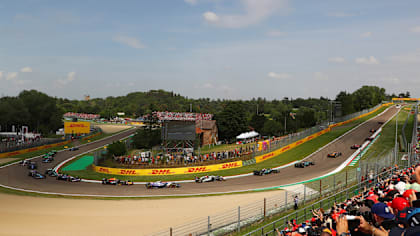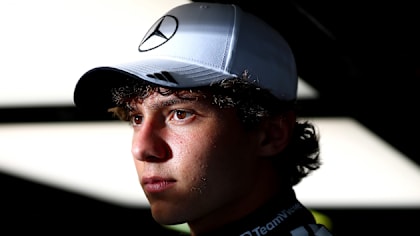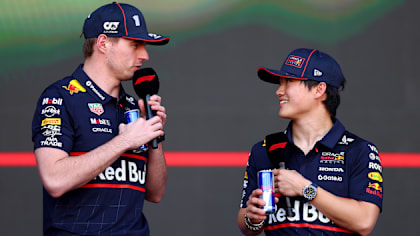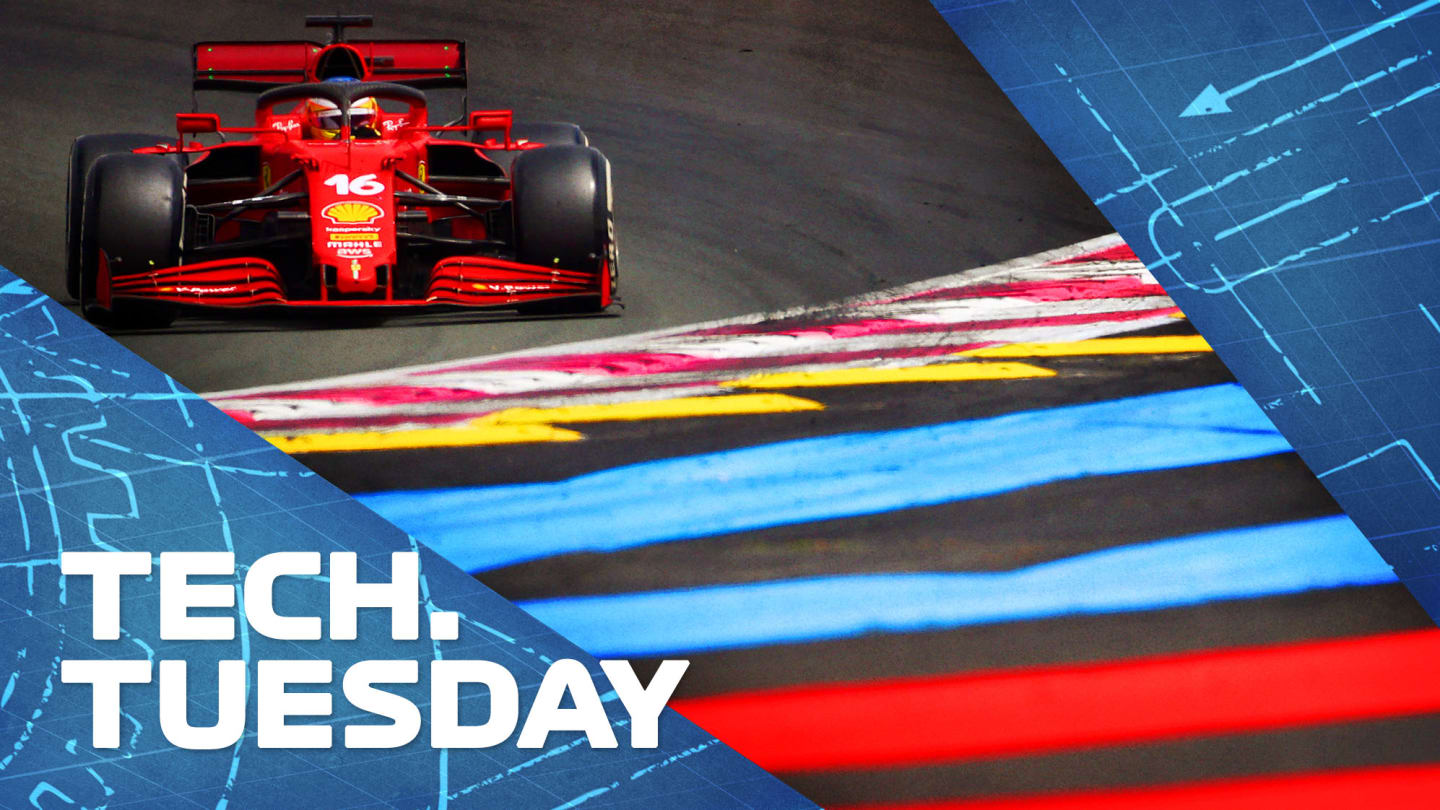
Technical
TECH TUESDAY: Ferrari were always likely to struggle at Paul Ricard – and here’s why

Share

Ferrari suffered an extremely disappointing French Grand Prix, with both cars out of the points despite Carlos Sainz and Charles Leclerc having qualified fifth and seventh respectively. To find out why, F1 technical expert Mark Hughes takes a deep dive into the issues suffered by the Scuderia at the Circuit Paul Ricard, assisted by the illustrations of Giorgio Piola.
Ferrari’s SF21 suffered much more than the cars around it from the graining of the front-left tyre that was an issue for everyone on race day at Paul Ricard.
It’s not a new phenomenon on the Ferrari that it struggles to maximise the front tyres, but it played out around the French track in a particularly extreme way, given the combination of the long corners and low-grip surface.
“Our performance was really strictly linked to the tyres,” explained Sainz, post-race, “the way we made them work. We have a very narrow window of working range on our front tyres. We tend to struggle a lot more with graining and with front wear than our competitors and probably compared to the whole field. It’s now [a case of] trying to understand why we have such a narrow window, why do we struggle more with this front tyre wear compared to our competitors?”
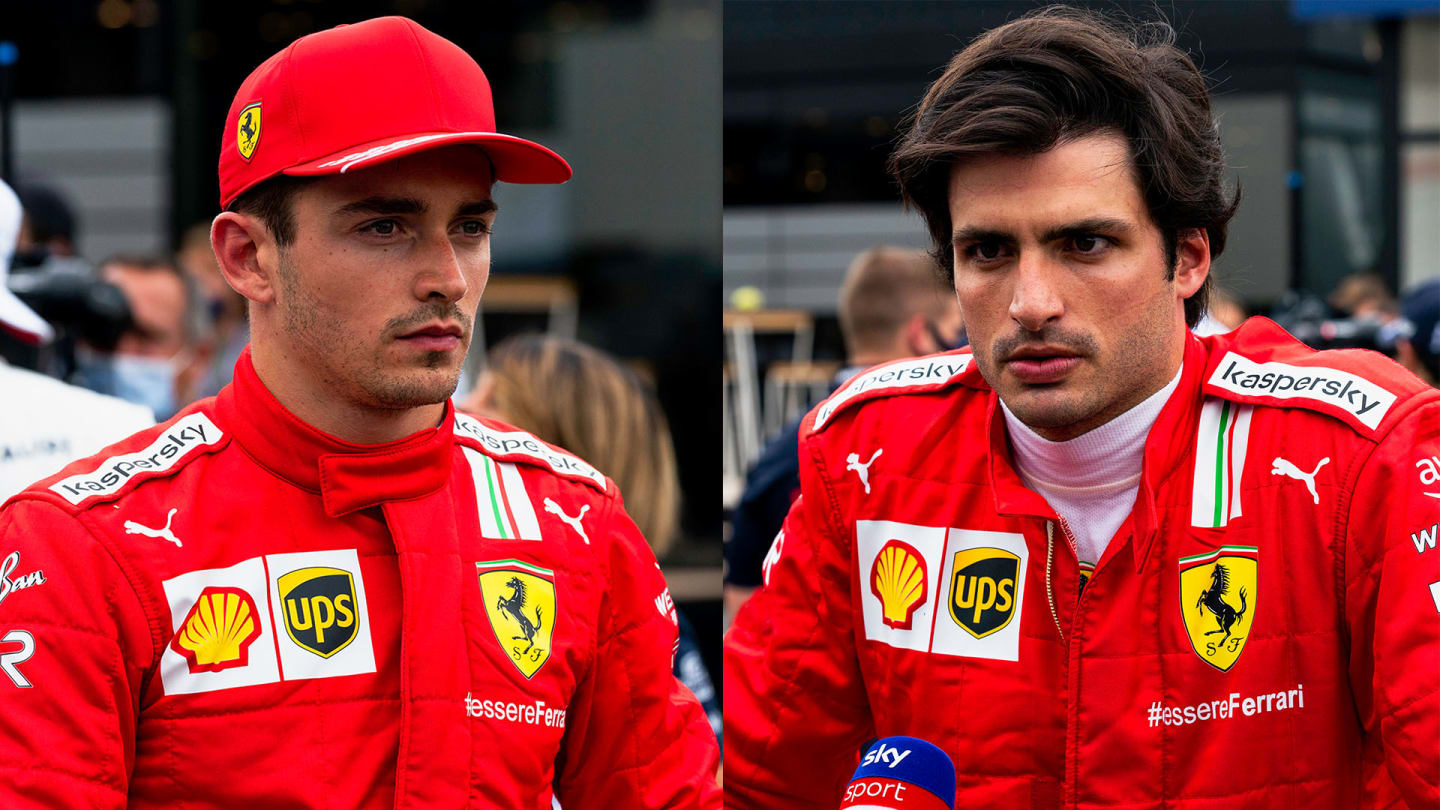
The Ferrari drivers' faces told a story after the Paul Ricard race
Although the car had a general understeer balance all weekend, the problem was less severe in the hotter conditions of Friday, when Leclerc’s long-run pace, in particular, was respectable. “On Friday, we were probably inside that narrow window of performance that we have,” explained Sainz.
“Our front wear numbers didn’t look bad. But on the laps to the grid, the track was very, very tricky. I actually had a moment and nearly lost the car in Turn 11. So this already told me that the track was in very, very different conditions.
“It’s not an excuse because the others – with very different conditions, a track one and a half seconds slower compared to Friday – didn’t open graining on the tyres, and we did.”
Graining of the tyres happens when the tyre’s tread temperature is mismatched with that of its core. If the core cannot be brought into its operating temperature and remains rigid and inelastic, it cannot generate the bending forces that contribute to its ‘mechanical’ grip.
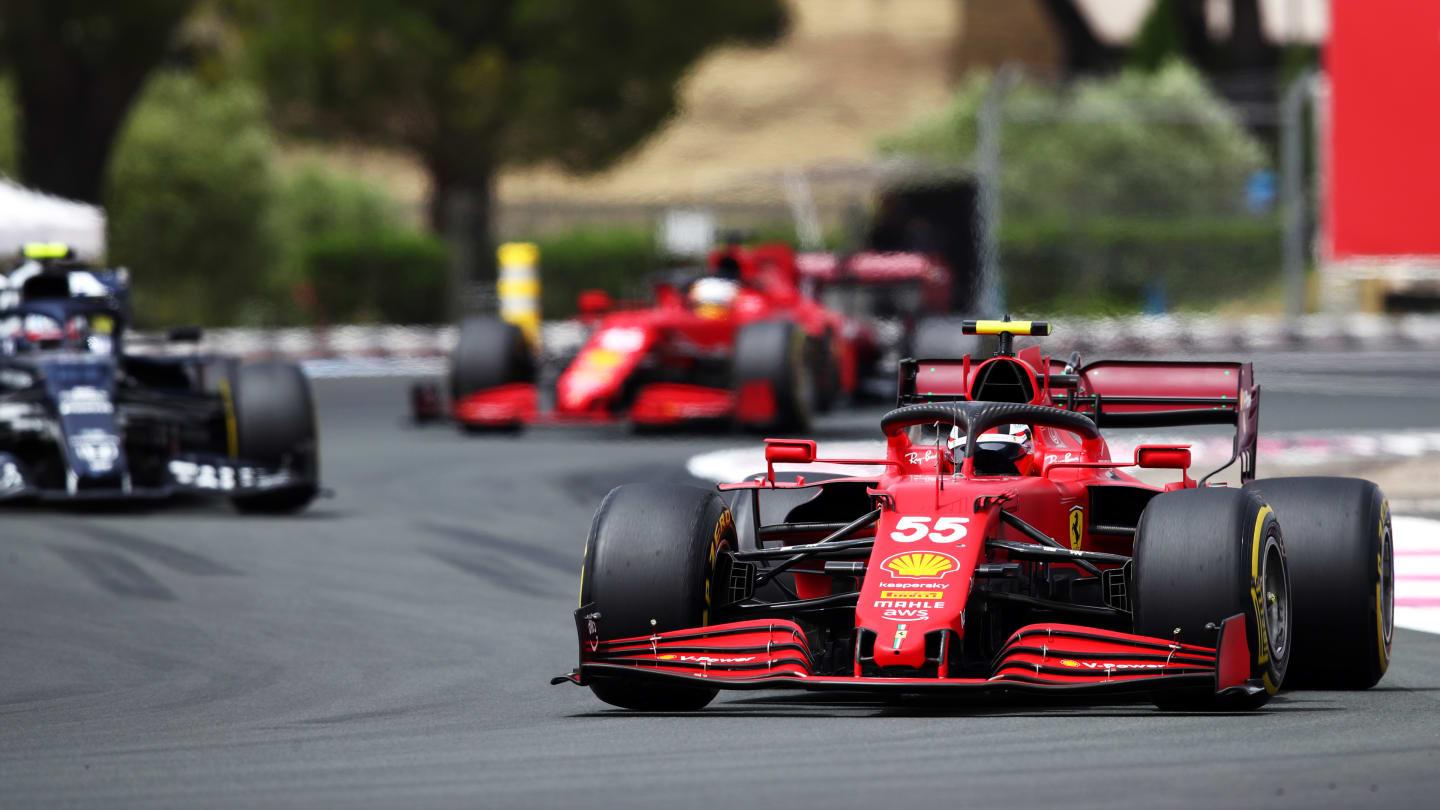
Graining caused the two Ferraris to be swallowed up by their rivals
The bending of the tyre reacts to the cornering forces of the car with an opposing force as it tries to bend itself back into shape against the forces imposed by the corner. The more effectively it does this, the less stressed the tread surface of the tyre is and the easier it is to keep the tread temperature in the ideal zone, in which its ‘chemical’ grip (the way it bonds to the track surface) is maximised.
If the core remains under-temperature, the tyre will slide across the track surface and overheat the tread. The over-temperature tread cannot then generate the forces that can help build temperature in the core to allow it to bend more, and the whole process becomes a vicious circle.
READ MORE: 6 Winners and 5 Losers from the French GP – Who brought their A-game to Paul Ricard?
As the hot surface of the tread is ripped, it tries to pull itself away from the rigid core of the tyre and the graining process unfolds, greatly increasing the wear rate of the tyre. The softer the compound of tyre, the more severe the graining will be. The longer the corner’s duration, the worse it will be. Short, sharp corners will not stress the surface anything like as much.
Charles Leclerc: Ferrari 'struggled massively' with tyres at French GP
The most effective way of countering a tyre reluctant to come up to temperature is to apply downforce to it, the more the better. Ferrari are limited in how much front downforce they can run on the car by how small a rear wing they are generally obliged to use because of their shortfall in engine power.
At Ricard, the window of set-up for Ferrari was extremely narrow – and became narrower still on race day when the track surface grip was much lower. Heavy rain on race morning wiped the previous rubber build-up away, and so that chemical bonding process of the tyres became yet more difficult.
A general trait seen all season with the car became much more punishing in this set of demands. It is not believed to be anything to do with the revised front wing Ferrari introduced here, which featured a narrower section of flap that can be adjusted.
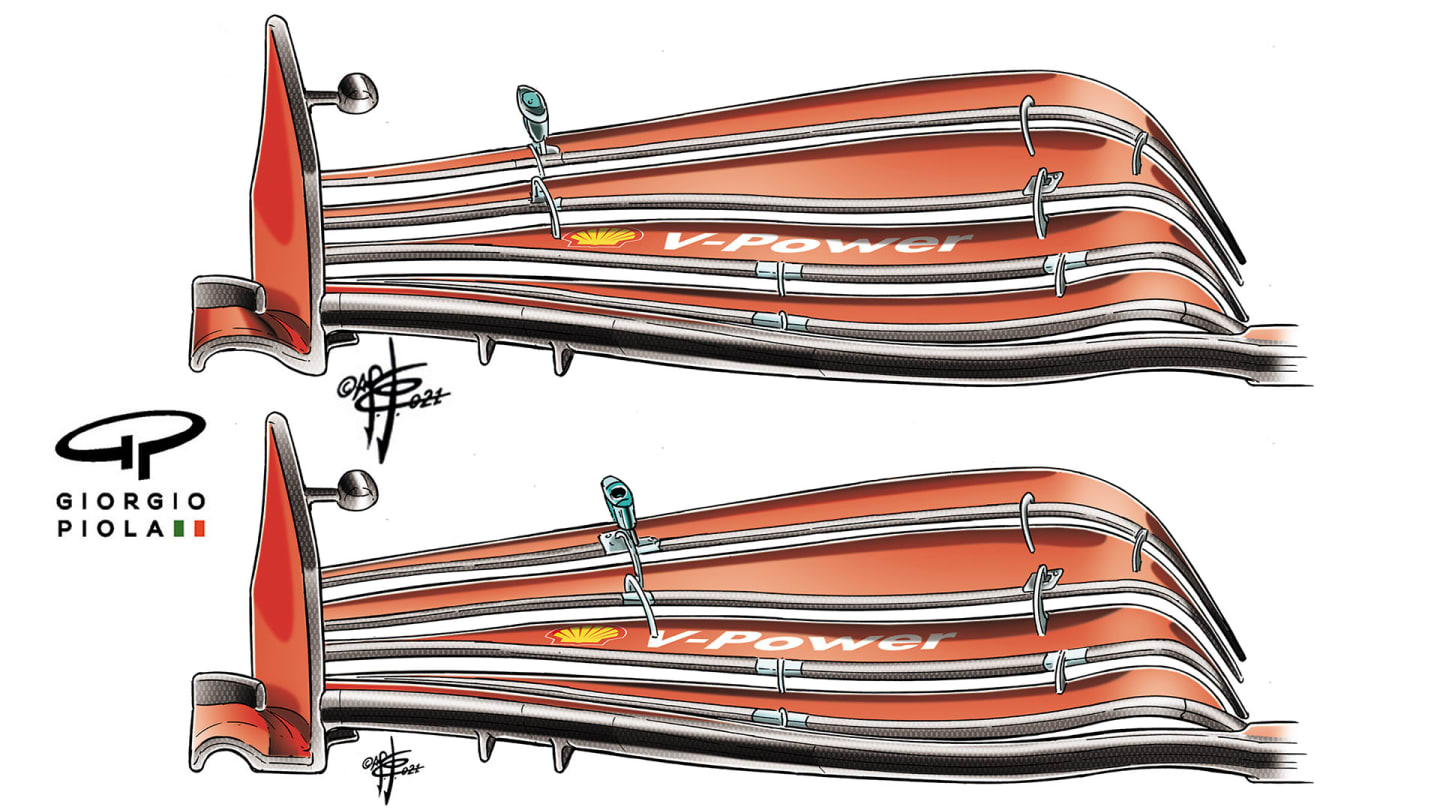
Ferrari's new front wing for France, shown at the top, versus the older spec one below
This, in combination with a revised shape to the footplate, meant the flap angle could be adjusted more without the inboard area of flap beginning to adversely affect the flow to the barge boards (which will affect rear grip). It seems Ferrari are seeking a wider window of balance between the front and rear ends.
Barcelona is a track with a not dissimilar range of corner demands – long and fast – to Ricard, but around that track the Ferrari was far more competitive. The difference seems to be the track surface, which at Barcelona is very high-grip, and at Ricard (which was resurfaced in January) is relatively low-grip.
As Sainz said, Ferrari now need “to work on our entire understanding to see how we can make this window wider and better”.
YOU MIGHT ALSO LIKE
Feature IT’S RACE WEEK: 5 storylines we’re excited about ahead of the 2025 Emilia-Romagna Grand Prix
Feature IndyCar winner James Hinchcliffe rates Kimi Antonelli's F1 start with his quarterly report card
News ‘I’m impressed, he’ll be fine’ – Red Bull praise Tsunoda for avoiding ‘intimidation’ of being Verstappen’s team mate
Video LIVESTREAM: Enjoy a 24-hour marathon of F1’s most iconic moments as the championship marks its 75th anniversary

